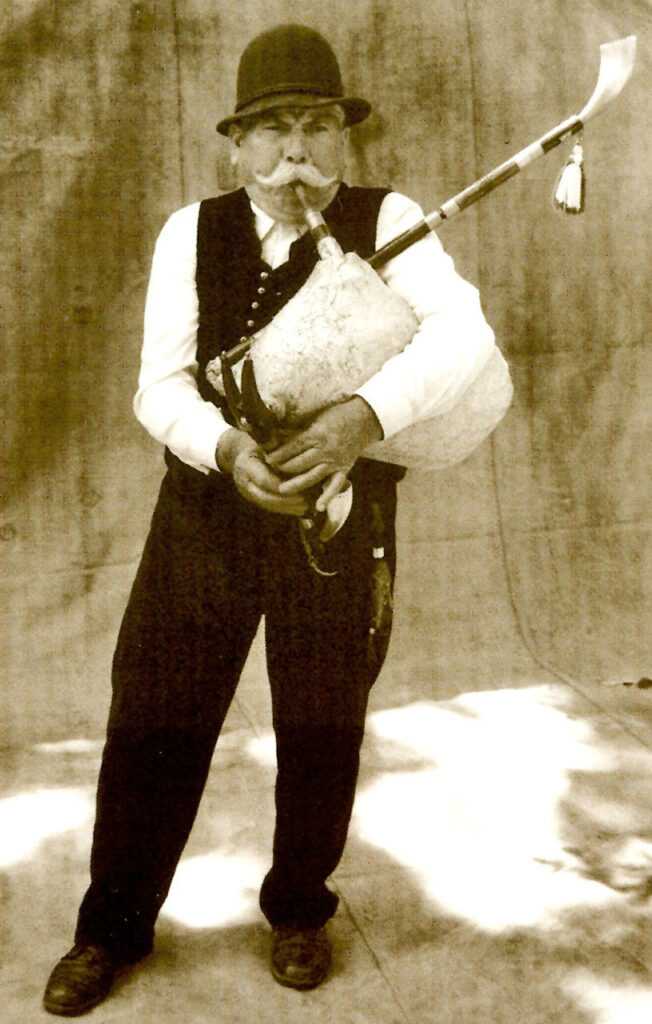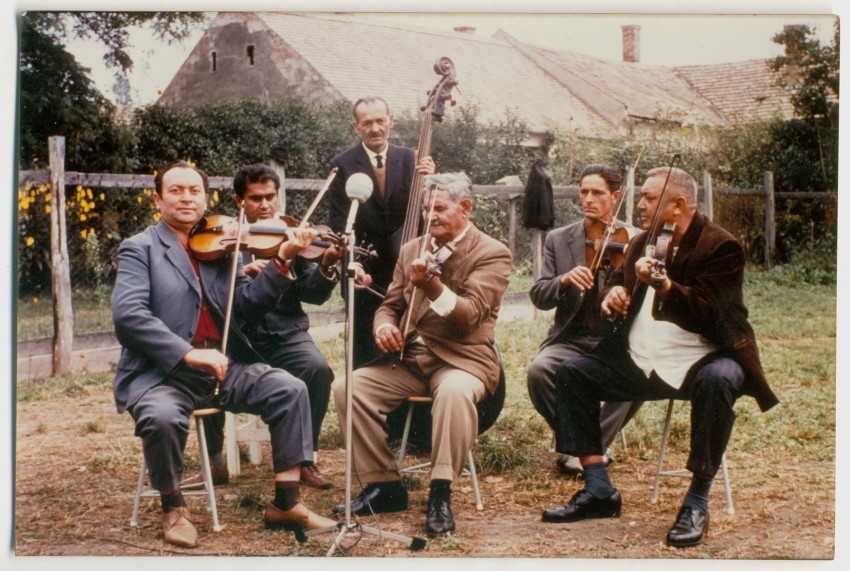The Hungarian people are a music-loving people, playing a wide range of different instruments in their music. Béla Bartók, Zoltán Kodály, Bálint Sárosi and Lajos Vargyas, among others, were widely involved in folk music, and numerous researches and collections have been preserved for posterity after their names.
In his work The Folk Music of Hungarians, Lajos Vargyas also deals with instrumental music, including the use of different instruments in music-making. I would like to mention a few of them.
An important instrument was the „duda” (bagpipe), which played three notes at once (the playing whistle, which played the melody, the counter-whistle, which played the fundamental note and the lower “dominant” note, and the rib-whistle, which was the constant buzzing note and provided the buzzing tone of the bagpipe). The „duda” was made of leather, was blown by mouth, and the air was squeezed into the whistles from a leather hose held under the arms. It was a favourite instrument of the canons, goulashers and servants, who were usually called upon to play at weddings, balls, pig feasts, etc… It was usually used as a stand-alone instrument.
According to Lajos Vargyas, the most important instrument for the people was the „citera” (zither), which in some regions was also called the tambura. This instrument was not used at balls, feasts and parties because it was not strong enough, but there was usually one in every home. It was a stringed instrument used to accompany folk songs, and it was always known which songs could be played on it and which could not.
On a similar level was the flute, which was generally the most popular among the shepherds, but was also played by the villagers, although not as often as the citerá. It could be played in one and a half to two octaves, and the old-style flute was characterised by the fact that it was played with ‘drones’ as well as melody and was very richly ornamented.
The Hungarian violin cannot be ignored, although it was played by advanced musicians. In addition to the violin, the viola, the double bass and the cimbalom were also an important part of the dance music tradition and were used most often by gypsy bands.
The violin was a melodic instrument, the most primitive form of which was the Gypsy instrument called the ‘mozsika’, which was homemade and smaller than today’s violins. The way it was held was different from the way it is usually held, which was typical of the whole Transylvanian gypsy community: it was held to the shoulder or even the chest, hung downwards and turned inwards. The bow was held with three fingers or a clenched fist.
We could go on and on about the instruments listed and those not listed, but the point remains the same: they are the most beautiful and lively melodies of our Hungarian music, and they make it unique.
Dóra Horváth

2. Photo above: The traditional gypsy folk band what was a part of Hungarian music traditions
Source: https://mek.oszk.hu/02000/02074/html/
Source of imagines:
https://magyarmuzeum.org/neprajz/magyar-nepi-hangszerek/duda/duda/
http://szellemikulturalisorokseg.hu/

